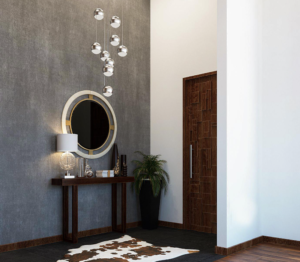In our quiz today you will note some questions that are more correlated towards architecture, which is a crucial aspect of interior design. As interior design professionals, we also look at architectural principles as these influence our designs and play a significant role in shaping our design ideas and concepts.
In this, the goal is to create a harmonious blend of architecture and interior design, like a perfect marriage so to speak, that enhances the functionality, aesthetics, and overall appeal of a space. Therefore, as well as considering aesthetic design, interior architecture also considers the functionality and material construction of interior spaces. It addresses structural elements like window and door placements, ventilation, heating and plumbing, as well as interior decoration and sustainable practices when developing our design plans.
As interior designers, we focus on creating environmentally responsible and aesthetically pleasing spaces. This approach considers the entire lifecycle of items to minimise negative environmental impact and achieve sustainability in interior design. The use of renewable, recyclable, and biodegradable materials will achieve this goal. By incorporating natural elements such as wood-like materials, greenery, and sunlight, this has a positive impact on the health and wellbeing of building occupants. Such as when specifying materials, it is essential to choose products that are safe for a variety of applications and create a natural environment. By doing so, we can create a seamless and cohesive design that not only meets but exceeds our clients’ expectations.
1: Using reclaimed wood in construction and interior design helps reduce deforestation and promotes recycling.
True / False
2: Compact fluorescent lights (CFLs) are more energy-efficient than traditional incandescent bulbs.
True / False
3: Low Volatile Organic Compound (VOC) paints release fewer harmful chemicals into the air, contributing to better indoor air quality.
True / False
Question 4: Passive solar design relies on maximising natural sunlight and minimising heat loss to enhance energy efficiency.
True / False
Question 5: Green roofs, covered with vegetation, help reduce energy consumption and provide insulation for buildings.
True / False
Question 6: Solar panels are a renewable energy source that can be used to generate electricity for both residential and commercial buildings.
True / False
Question 7: Rainwater harvesting systems collect rainwater for reuse, reducing the demand on municipal water supplies.
True / False
Question 8: Using energy-efficient appliances, such as Energy Star-rated products, can significantly lower electricity bills and reduce environmental impact.
True / False
Question 9: Sustainable interior design focuses only on aesthetics, not on the environmental impact of materials and practices.
True / False
Question 10: LEED (Leadership in Energy and Environmental Design) certification assesses the overall environmental performance of a building.
True / False
In East Africa, we can focus on incorporating energy-efficient lighting, utilising reclaimed materials, and implementing rainwater harvesting systems to conserve resources. Additionally, investing in renewable energy sources like solar panels and seeking LEED certification for buildings can significantly contribute to a sustainable future. By embracing these practices, we can not only enhance the efficiency and comfort of our buildings but also positively impact the environment and promote a greener community.
And if you did not know …
Compact fluorescent lamps are a type of energy-saving bulb that consumes much less energy than the conventional incandescent lamps. It is made of a glass tube, along with two electrodes. (Now you are schooled 😉 ).
Volatile organic compounds are compounds that have high vapour pressure and low water solubility. Many VOCs are human-made chemicals that are used and produced in the manufacture of paints, pharmaceuticals, and refrigerants (Now you know 😉 ).
Passive solar design refers to the use of the sun’s energy for the heating and cooling of living spaces by exposure to the sun. A passive solar building uses south-facing windows to collect heat from the sun and stores that heat in materials throughout the building known as thermal mass. (Did you know this? 😉 )
LEED, that is Leadership in Energy and Environmental Design is a green building certification program used worldwide that recognizes best-in-class building strategies and practices. To receive LEED certification, building projects satisfy prerequisites and earn points to achieve different levels of certification.
Consult our expert team at Creative Studios Limited, to bring your sustainable design dreams to life. Let’s work together to create a home that aligns with your values and promotes a healthier planet. Call us at : +255 222772270, or email us: info@creativestudios.co.tz, let’s collaborate to craft a space that tells your story. 

